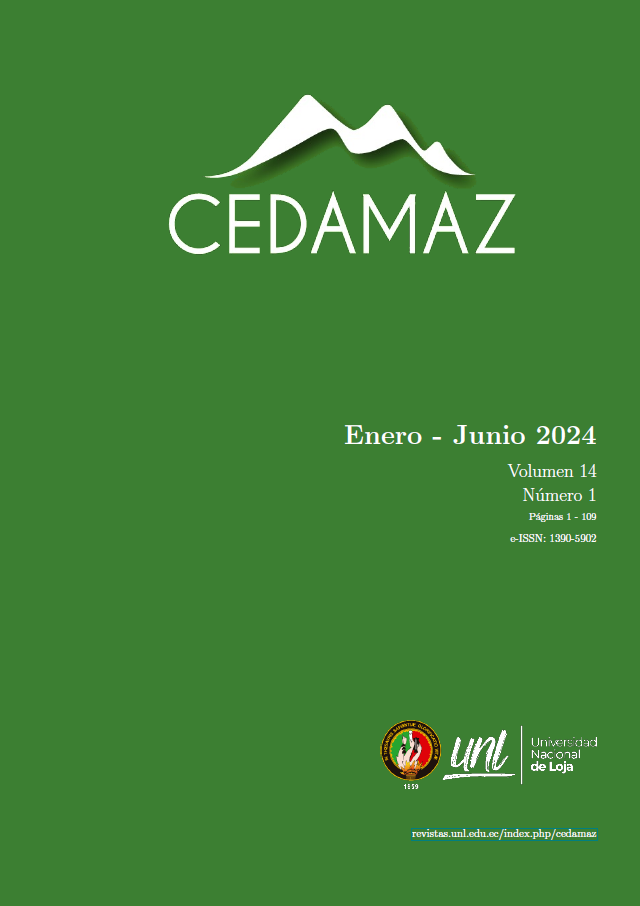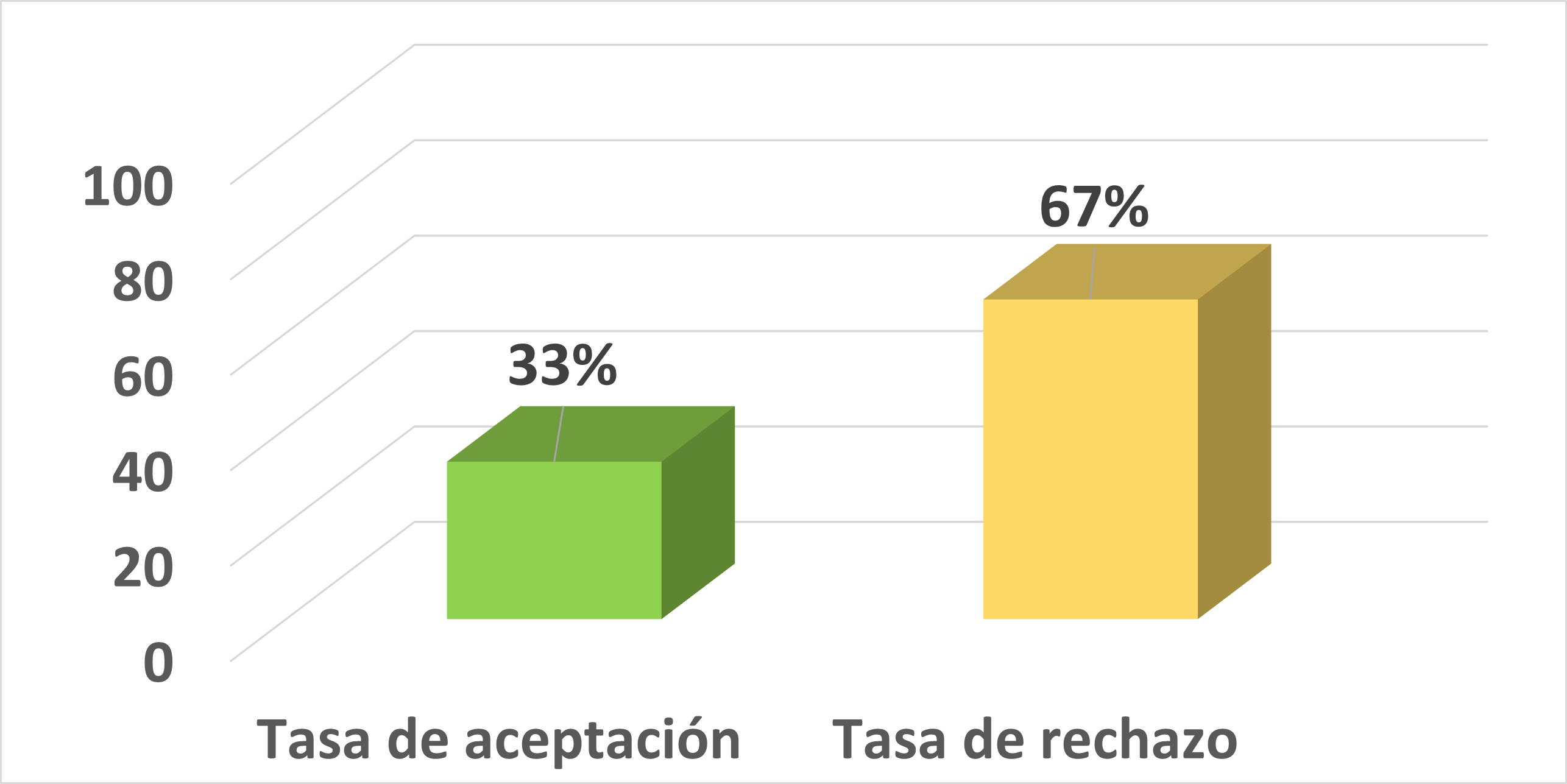Evaluation of agricultural waste, as a substrate for the artisanal production of the Oyster Mushroom (Pleurotus Ostreatus)
DOI:
https://doi.org/10.54753/cedamaz.v14i1.1593Keywords:
Sugarcane bagasse, Biological efficiency, Earliness, Rice chaff, Production rateAbstract
Pleurotus ostreatus is one of the most consumed edible mushrooms worldwide, in Ecuador, there is not much information on the use of agricultural residues that serve as optimal substrates, nor agroclimatic adaptations of the artisanal cultivation of this fungus. The objective of this work was to evaluate different agricultural residues, as a substrate for the artisanal production of the oyster mushroom (Pleurotus ostreatus) in the community of Carmen, Loja, Ecuador. For the development of this work, three treatments with five replicates for each treatment were evaluated, the treatments were evaluated on agricultural residues of: cane bagasse (T1), coffee husk (T2) and rice chaff (T3), the variables that were measured were: earliness, biological efficiency and production rate. The statistical design used was a completely randomized design statistically evaluated by means of an ANOVA with the statistical program R. The results indicated that for the treatment with sugar cane bagasse (T1) the earliness found was between 34 and 44 days, obtaining an average production of 25% and biological efficiency 15%. For the cultivation of the fungus in the coffee husk residues (T2), growth problems were observed; in the treatment with rice chaff (T3) it presented an earliness between 52 and 81 days with an average production rate of 3.2% and an average biological efficiency of 2%. Concluding that cane bagasse is the most recommended agricultural residue for the cultivation of the fungus Pleurotus ostreatus in the community of Carmen, Loja Ecuador.References
Cardenas, C. A. (2017). Valoración y crecimiento del cultivo de Pleurotus ostreatus en cuatro sustratos generados a partir de procesos productivos agropecuarios, en el municipio de Málaga Santander. Revista Colombiana de Investigaciones Agroindustriales, 4. https://doi.org/10.23850/24220582.857
Cruz, D., Capa, D., Maza, D., Ojeda, R., & Benítez, A. (2021). Producción y valor proteico de Pleurotus ostreatus en la región sur de Ecuador: Valor proteico de Pleurotus ostreatus. ACI Avances en Ciencias e Ingenierías, 12(2), 7. https://doi.org/10.18272/aci.v12i2.1806
Cuervo, J., & Garzón, J. (2008). Producción de Pleurotus ostreatus sobre residuos sólidos lignocelulósicos de diferente procedencia. Nova, 6(10), 126. https://doi.org/10.22490/24629448.403
Cueva, M. B. R., & Monzón, A. H. (2014). Evaluación de residuos agrícolas para la producción del hongo Pleurotus ostreatus. 48, 54-59.
Fan, L., Soccol, A. T., Pandey, A., Vandenberghe, L. P. de S., & Soccol, C. R. (2006). Effect of caffeine and tannins on cultivation and fructification of Pleurotus on coffee husks. Brazilian Journal of Microbiology, 37(4), 420-424. https :// doi .org / 10 .1590 / S1517-83822006000400003
Grimm, D., & Wösten, H. A. B. (2018). Mushroom cultivation in the circular economy. Applied Microbiology and Biotechnology, 102(18), 7795-7803. https://doi.org/10.1007/s00253-018-9226-8
Mateus, D. N., Marliane, C. S. da S., João, G. S. S., Juliana, S. da S., Yutaka, T., & Maria, C. M. K. (2017). Pleurotus ostreatus, mushrooms production using quick and cheap methods and the challenges to the use of coffee husk as substrate. African Journal of Microbiology Research, 11(31), 1252-1258. https://doi.org/10.5897/AJMR2016.7942
Puig-Fernández, Y., Crespo-Zafra, L. M., Cardona-Soberano, Y. R., Matos-Mosqueda, L., & Serrano-Alberni, M. (2020). Evaluación de tres residuos agroindustriales como sustratos para cultivo del Pleurotus ostreatus var. Florida. Revista Científica Multidisciplinaria Arbitrada «Yachasun », 4(7), 162-176. https://doi .org/10 .46296/yc.v4i7.0040
Rios, M. D. P., Hoyos, J. L., & Mosquera, S. A. (2010). Pleurotus ostreatus spread in different culture media. 8(2), 10.
Royse, D. J., Baars, J., & Tan, Q. (2017). Current overview of mushroom production in the world. En C. Z. Diego & A. Pardo-Giménez (Eds.), Edible and Medicinal Mushrooms (pp. 5-13). John Wiley & Sons, Ltd. https://doi.org/10.1002/9781119149446.ch2
Royse, D., Rhodes, T.W., Ohga, S.,&Sanchez, J. E. (2004). Yield, mushroom size and time to production of Pleurotus cornucopiae (oyster mushroom) grown on switch Grass substrate spawned and supplemented at various rates. Bioresource Technology, 91(1), 85-91. https://doi .org/10.1016/S0960-8524(03)00151-2
Rstudio Team. (2020). RStudio: Integrated Development for R. RStudio, PBC, Boston, MA. http://www.rstudio.com/
Sahagún, F. L. V. (2020). Aprovechamiento sostenible de hongos comestibles; hacia una seguridad alimentaria. 11.
Svanberg, I., & Lindh, H. (2019). Mushroom hunting and consumption in twenty-first century post-industrial Sweden. Journal of Ethnobiology and Ethnomedicine, 15(1), 42. https://doi.org/10.1186/s13002-019-0318-z
Vega, A., & Franco, H. (2013). Productividad y calidad de los cuerpos fructíferos de los hongos comestibles Pleurotus pulmonarius RN2 y P. djamor RN81 y RN82 cultivados sobre sustratos lignocelulósicos. Información Tecnológica, 24(1), 69-78. https://doi.org/10.4067/S0718-07642013000100009
Vetayasuporn, S. (2006). Oyster mushroom cultivation on different cellulosic substrates. Research Journal of Agriculture and Biological Sciences, 2(6), 4.
Published
How to Cite
Issue
Section
License
Copyright (c) 2024 CEDAMAZ

This work is licensed under a Creative Commons Attribution-NonCommercial-NoDerivatives 4.0 International License.
Those authors who have publications with this journal, accept the following terms:
- After the scientific article is accepted for publication, the author agrees to transfer the rights of the first publication to the CEDAMAZ Journal, but the authors retain the copyright. The total or partial reproduction of the published texts is allowed as long as it is not for profit. When the total or partial reproduction of scientific articles accepted and published in the CEDAMAZ Journal is carried out, the complete source and the electronic address of the publication must be cited.
- Scientific articles accepted and published in the CEDAMAZ journal may be deposited by the authors in their entirety in any repository without commercial purposes.
- Authors should not distribute accepted scientific articles that have not yet been officially published by CEDAMAZ. Failure to comply with this rule will result in the rejection of the scientific article.
- The publication of your work will be simultaneously subject to the Attribution-NonCommercial-NoDerivatives 4.0 International (CC BY-NC-ND 4.0)









